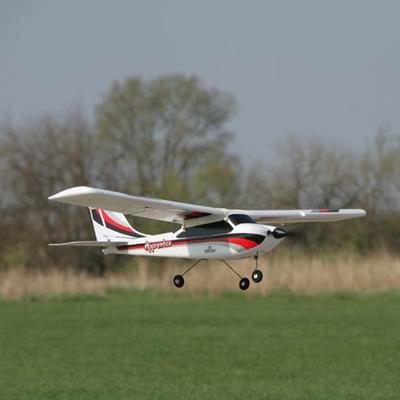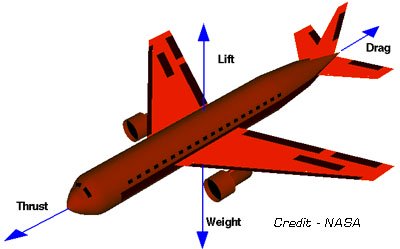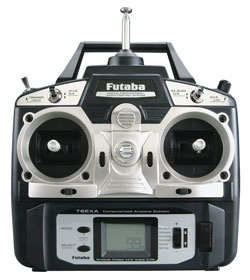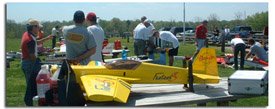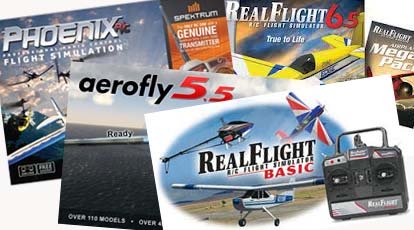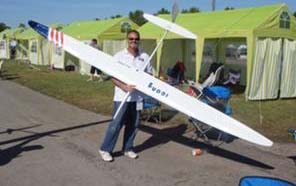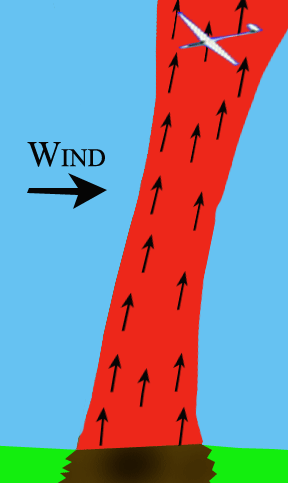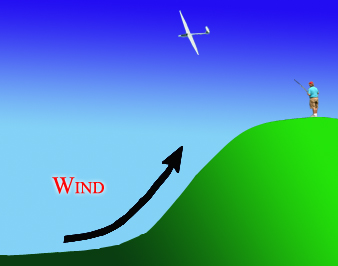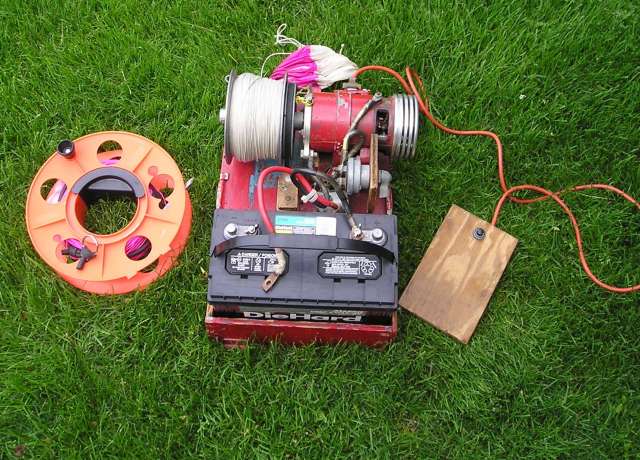RC Gliders
While it may seem somewhat counter intuitive for many folks, RC gliders are arguably the most exciting breed of radio controlled aircraft!
For some it's the challenge of seemingly defying gravity by keeping their sailplanes aloft for hours at a time. For others, it's the thrill of riding a thermal so high the glider becomes merely a dot in the sky.
And a few select pilots thrive on the pure adrenaline from dynamic soaring reaching speeds of nearly 400 mph!
Glider Fundamentals
Yeah, there really are RC gliders that fly 400mph! We'll get to that in a second. But first it is important to understand the physics of how gliders stay afloat.
In the absence of any moving air, all gliding aircraft will loose altitude until they hit the ground. It's that pesky law of gravity at work.
Some sailplanes will sink faster than others. The speed at which each descends in completely still air is called the Minimum Sink Speed.
In order for RC gliders to gain or maintain altitude it must find a column or pocket of air that is rising faster than the glider is sinking. This rising air is called lift.
There are two types of lift associated with gliding, which are thermal lift and ridge lift.
RC Thermal Gliders
An RC thermal glider stays aloft by the same principle that pulls hot-air balloons high into the sky. Both are pulled upward by the force of rising warm air.
A hot-air balloon basically hangs from a huge bag of hot air, where as a thermal glider floats on top of a rising mass of warm air.
The source of hot air for the hot-air balloon comes from a controlled fire in the basket. The source of warm air for the thermal glider comes from nature.
Finding a naturally occurring thermal to ride into the heavens is the magic of thermal gliding. More information on catching thermals.
Slope Soaring
Slope soaring involves riding atop the rising air that comes from wind blowing directly into a ridge or hill.
When a strong wind hits a hill straight on, it really has nowhere to go but up. This is called ridge lift. Ridge lift is much stronger and more uniform than thermal lift.
For this reason, RC gliders designed for slope soaring are generally built a little heavier than thermal gliders. They usually have shorter wings and are turned by aileron control as opposed to rudder control for better aerobatic performance.
Learn more about slope gliding
The conventional method of slope gliding is to float atop the rising air from ridge lift in the same manner as thermal gliders utilize thermal lift.
A relatively new type of slope soaring harnesses the energy difference between the stagnant air on the backside of the hill and the fast moving air coming over the hill to reach unbelievably fast speeds. Yes, some can go nearly 400 mph!
You gotta take a second to check out dynamic soaring!
Launching Sailplanes
Since most RC gliders don't have a motor or engine, you have to get them in the air somehow. There are several different ways to launch sailplanes.
Hand Launching
Smaller gliders with a wingspan of 1.5meter or less and considered Hand Launched Gliders (HLGs). Although other methods can be used, HLG's are generally launched the old fashioned way, by hand.
For years the typical method for hand launching a glider was to give it a firm over head javelin style toss. This gave stronger more athletic pilots a huge advantage in competitions over some of the older or out of shape guys.
Nowadays discus style launching with Discus Launched Gliders (DLGs) is the more standard way of hand launching gliders.

This involves holding onto one of the wing tips while whirling around in a circle and releasing the glider much like a track and field discus. This method of launching puts the glider much higher in the air with much less effort!
More on discuss launched gliders
Bungee/Hi-start Launching
A Hi-start or bungee launch is basically a gigantic sling shot that
can launch RC gliders several hundred feet into the air. An elastic
chord or stretchable tubing is attached to a longer section of ridged
line.
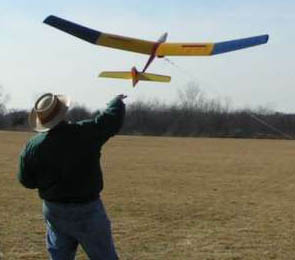
Courtesy of Ed Anderson
The elastic end of the line is attached to a solid stake in the ground; the ridged end is attached to the glider by a tow hook with a parachute.
|
The pilot pulls the glider back stretching the chord. When released the glider immediately zings high into the sky. Once airborne, the tow hook releases and floats back to the ground via the parachute. Varying lengths and strengths of tubing are used depending on the size of your glider. Some people even make their own bungee launching systems. |
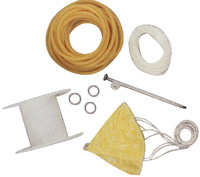 |
Winch Launching
This method of launching a sailplane uses a relatively high speed winch.
Courtesy of Ed Anderson
The winch sits on the ground next to the pilot. A cable extends from the winch to a return pulley staked into the ground severally hundred feet in front of the pilot.
This cable goes round the pull then back to the pilot where it is hooked to the gliders tow hook, which has a parachute.
The pilot uses a foot pedal to control how quickly the winch reels in the cable. As the cable is reeled in, the sailplane is swiftly pulled towards the return pulley as the glider races to the air. The tow hook releases and parachutes down.
Hand Towing
Instead of using a winch, hand towing involves having a buddy or two take a hole of the end of the line and run like crazy to get your bird airborne.
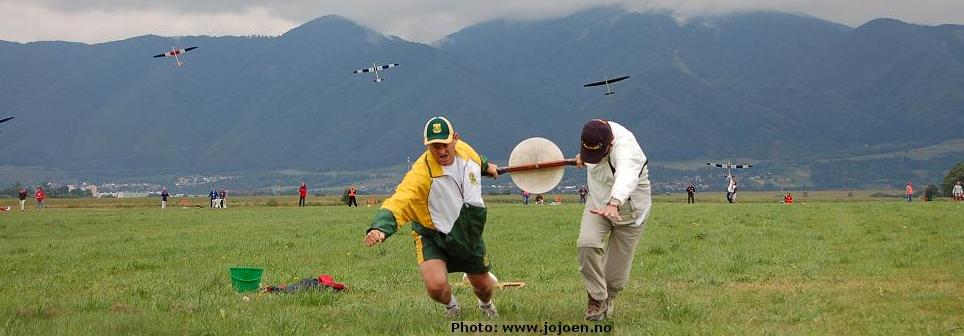
Some people stake one end of the line to the ground and run the line through a hand pulley. This method actually launches the glider twice as fast as the launcher runs.
Tow with Another RC Plane (Aero Tow)
With this method of launch, you attached your glider to a larger "powered" RC airplane via a tow line. The tow plane pulls the sailplane high into the sky, around 200 M altitudes, where it is released.
Electric Motor Launch
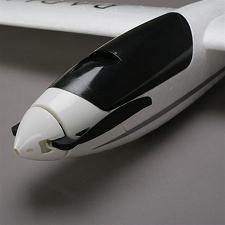
Many RC gliders, like Parkzone's Radian shown to the right, are equipped with small electric motors to pull them into the sky.
The propellers actually fold back when the motor is stopped to prevent the prop from acting as a brake. These types of RC gliders are great when youre just learning to catch thermals.
More about RC Sailplanes
Home › RC Gliders
Let’s Go Flying! |
|
5 Steps for Successful First Flight! When the RC bug bites, it bites hard! Control yourself my friend! Save yourself much time and money by following these five steps to success! |
